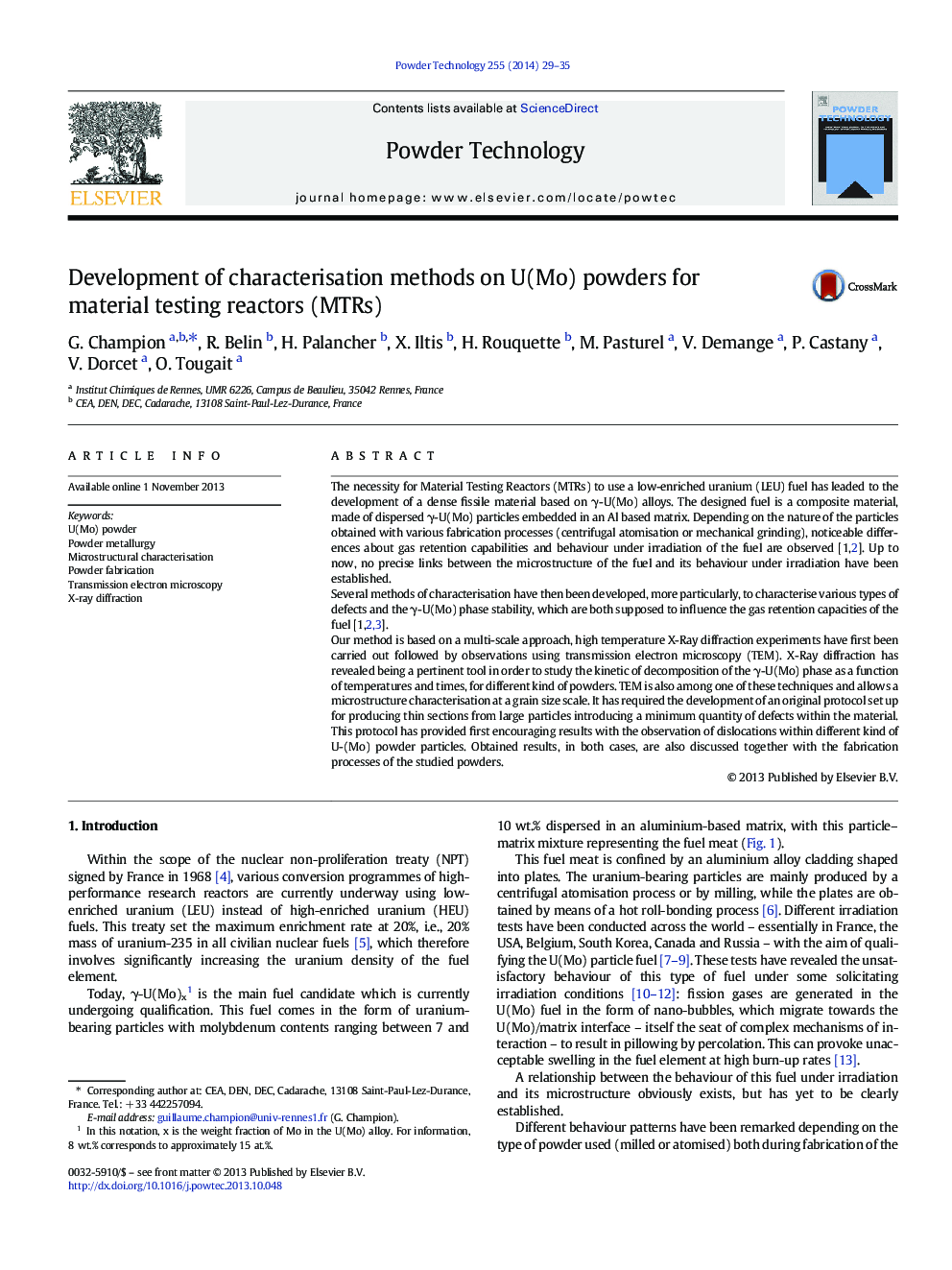| کد مقاله | کد نشریه | سال انتشار | مقاله انگلیسی | نسخه تمام متن |
|---|---|---|---|---|
| 236128 | 465662 | 2014 | 7 صفحه PDF | دانلود رایگان |

• Preparation of thin foils for TEM observation has been developed for U(Mo) powders.
• TEM results show a small amount of defects in atomised U(Mo) particles.
• γ-U(Mo) phase stability has been studied using high-temperature X-Ray diffraction.
The necessity for Material Testing Reactors (MTRs) to use a low-enriched uranium (LEU) fuel has leaded to the development of a dense fissile material based on γ-U(Mo) alloys. The designed fuel is a composite material, made of dispersed γ-U(Mo) particles embedded in an Al based matrix. Depending on the nature of the particles obtained with various fabrication processes (centrifugal atomisation or mechanical grinding), noticeable differences about gas retention capabilities and behaviour under irradiation of the fuel are observed [1,2]. Up to now, no precise links between the microstructure of the fuel and its behaviour under irradiation have been established.Several methods of characterisation have then been developed, more particularly, to characterise various types of defects and the γ-U(Mo) phase stability, which are both supposed to influence the gas retention capacities of the fuel [1,[2] and [3]].Our method is based on a multi-scale approach, high temperature X-Ray diffraction experiments have first been carried out followed by observations using transmission electron microscopy (TEM). X-Ray diffraction has revealed being a pertinent tool in order to study the kinetic of decomposition of the γ-U(Mo) phase as a function of temperatures and times, for different kind of powders. TEM is also among one of these techniques and allows a microstructure characterisation at a grain size scale. It has required the development of an original protocol set up for producing thin sections from large particles introducing a minimum quantity of defects within the material.This protocol has provided first encouraging results with the observation of dislocations within different kind of U-(Mo) powder particles. Obtained results, in both cases, are also discussed together with the fabrication processes of the studied powders.
Figure optionsDownload as PowerPoint slide
Journal: Powder Technology - Volume 255, March 2014, Pages 29–35